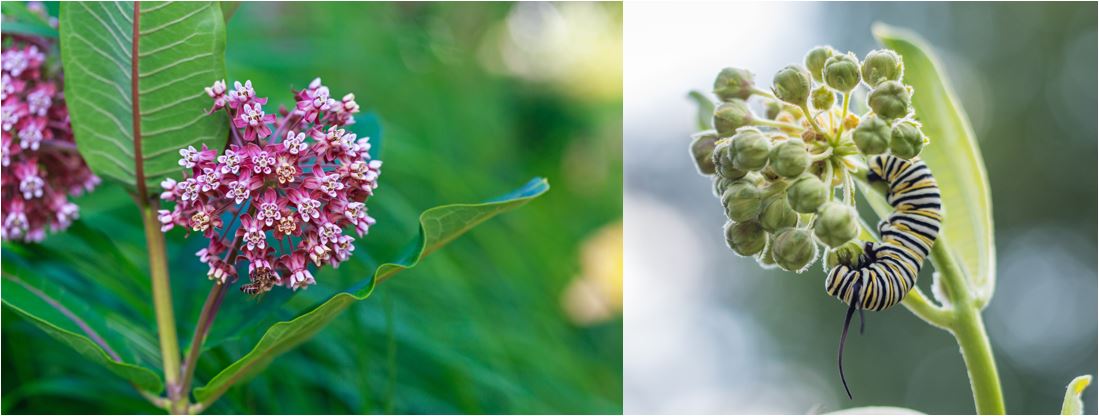The ONLY type of Milkweed in British Columbia!
“What types of milkweed should I plant in my garden?”

This may seem like a crazy question if you’re just getting started with native gardening. Why would you want to plant a weed?!
But milkweed isn’t a weed at all. Instead, it’s a flowering plant that attracts butterflies (think Monarchs), native bees, and other pollinating insects, which is an excellent thing!
This article will give you information about the only type of milkweed that grows natively in British Columbia
Milkweed in British Columbia:
-
RELATED: The 34 MOST Common Birds in British Columbia! (With Photos)
#1. Showy Milkweed
- Asclepias speciosa

Growing Information:
- USDA Hardiness Zone: 3-8
- Life Cycle: Perennial
- Approximate Mature Size: 145 to 90 centimeters; occasionally up to 3 meters
- Bloom Time: May to September
As the name suggests, Showy Milkweed features flashy pink and white umbels or clusters of small flowers. The flowers are fragrant, and individual flowers look a bit like crowns. In ideal conditions, Showy Milkweed may grow as tall as 3 meters!

As a garden plant, Showy Milkweed has the benefit of being a less aggressive spreader than most other milkweed varieties in British Columbia. It can be grown easily from seed or the cuttings of an existing plant. It’s very drought tolerant and can be grown in a wide range of soils.
Like other milkweeds, Showy Milkweed attracts native insects and Monarch Butterflies to your yard or garden. Monarchs will visit the flowers for nectar and lay eggs on the plants, which are host plants for the Monarch caterpillars. It will also attract beautiful Queen and Viceroy butterflies to your property!
RELATED: 23 Rabbit Resistant Plants to grow in British Columbia!
Are you looking for more information on milkweed in British Columbia?
Check out this guide!
Do you have milkweed in your garden?
What’s your favorite thing about this plant? Leave a comment below!

